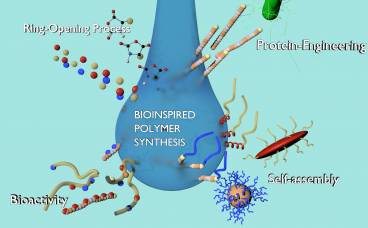
Colin Bonduelle
Senior researcher

Biologically-inspired nanotechnologies are aiming at mimicking biological systems taking advantage of nature’s evolution. Biology, at the “nano” level, serves our inspiration: building blocks in natural organisms are nanometer-sized macromolecules (e.g. proteins, nucleic acids) that, when assembled at the nano- and mesoscopic length scales, determine and control biological functions.
Our aim is to mimic these natural self-assembly processes by combining the use of home-made biomimetic polymers with soft matter engineering. An important aspect of this approach relies on the development of macromolecular building blocks, and we have acquired a recognized expertise in the chemical and biochemical design of block copolymers based on degradable (e.g. polyesters, polycarbonates) and metabolizable (e.g. polypeptides, proteins polysaccharides) segments. In particular, we have developed an in-depth knowledge and new technologies based on ring opening polymerizations and protein engineering techniques to obtain polymer backbones made of amino acids. These building blocks are combined with synthetic or natural polymers (e.g., polysaccharides, DNA) or bioactive molecules (e.g., monosaccharides, peptides, drugs) enabling to reach amphiphilic structures (e.g., diblock, triblock, branched) encoding, simultaneously at the macromolecular level, self-assembly and unique properties (physico-chemical, conformation, structure, biological, etc.).